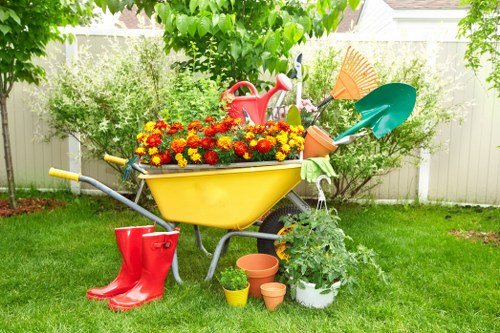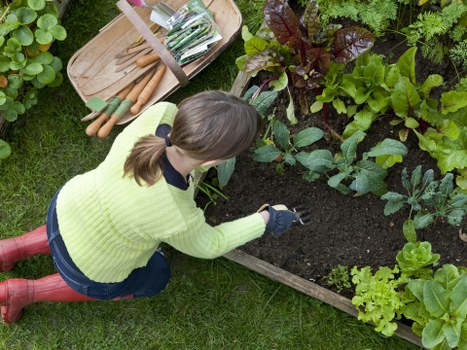Comprehensive Guide to Garden Fence Replacement

Why Replace Your Garden Fence?
A garden fence serves multiple purposes: it defines your property boundaries, enhances privacy, and adds aesthetic value to your outdoor space. Over time, fences can deteriorate due to weather conditions, wear and tear, or simply becoming outdated. Garden fence replacement becomes essential to maintain the functionality and beauty of your garden.
Replacing your fence can also improve the overall security of your property. A sturdy and well-maintained fence deters intruders and keeps unwanted animals out, ensuring a safe environment for your family and pets.
Moreover, updating your fence design can significantly enhance the curb appeal of your home, potentially increasing its market value. Whether you're planning to sell or simply want to enjoy a refreshed garden, fence replacement is a worthwhile investment.

Signs You Need a Fence Replacement
Visible Damage
Cracked, rotting, or broken fence panels are clear indicators that it's time for a replacement. These issues can compromise the fence's structural integrity and effectiveness.
Frequent Repairs
If you find yourself constantly repairing your fence, it may be more cost-effective in the long run to replace it entirely. Continuous maintenance can be time-consuming and expensive.
Outdated Design
Styles and materials evolve over time. An old or mismatched fence can detract from your garden's overall appearance. Replacing it with a modern design can revitalize your outdoor space.

Choosing the Right Fence Material
Wood
Wooden fences offer a classic and natural look. They are versatile and can be customized to match your garden's style. However, they require regular maintenance to prevent rot and insect damage.
Vinyl
Vinyl fences are durable and low-maintenance. They resist weathering, do not require painting, and come in various styles and colors.
Metal
Metal fences, such as aluminum or wrought iron, provide strength and longevity. They are excellent for security and can add an elegant touch to your garden.

Installation Process
Planning and Measurement
Accurate planning and measurement are crucial for a successful fence replacement. Assess the area, determine the required materials, and ensure compliance with local regulations.
Removing the Old Fence
Carefully dismantle and remove the existing fence. Proper disposal of old materials is essential to maintain a clean and safe environment.
Installing the New Fence
Follow the manufacturer's guidelines or hire a professional for installation. Ensure that posts are firmly anchored and panels are securely attached for maximum durability.

Maintenance Tips for Longevity
- Regular Inspection: Check your fence periodically for signs of damage or wear.
- Cleaning: Keep your fence clean from debris, mold, and mildew to prevent deterioration.
- Protective Coating: Apply sealants or paint to wooden fences to protect against the elements.
- Repair Promptly: Address any issues immediately to avoid further damage.
Cost Considerations
The cost of garden fence replacement varies based on materials, size, and labor. Wooden fences are generally more affordable upfront but may incur higher maintenance costs. Vinyl and metal options, while more expensive initially, offer greater longevity and lower maintenance.
Budgeting Tips
- Determine your budget before selecting materials.
- Consider the long-term costs, including maintenance and potential repairs.
- Get multiple quotes from reputable contractors to ensure competitive pricing.
Enhancing Aesthetic Appeal
A beautiful garden fence can transform your outdoor space. Choose designs and colors that complement your home's architecture and landscape. Incorporate decorative elements like latticework or ornamental posts to add character.
Color and Style Selection
Select colors that blend with your garden's palette. Styles can range from traditional picket fences to modern horizontal slat designs, each offering a unique look and feel.
Integrating with Landscaping
Ensure that your fence works harmoniously with your surrounding plants and garden features. This integration can create a cohesive and inviting outdoor environment.
Eco-Friendly Fence Options
For environmentally conscious homeowners, there are sustainable fence materials available. Reclaimed wood, bamboo, and recycled metal are excellent choices that reduce environmental impact.
Reclaimed Materials
Using reclaimed wood or metal not only adds a unique character to your fence but also promotes recycling and reduces the need for new resources.
Sustainable Practices
Opt for materials and installation methods that minimize waste and energy consumption. This approach ensures that your fence replacement aligns with eco-friendly values.
Professional vs. DIY Replacement
Deciding between hiring professionals or undertaking a DIY fence replacement depends on your skill level, time, and budget.
Benefits of Hiring Professionals
- Expertise and experience ensure a high-quality installation.
- Time-efficient, allowing you to focus on other projects.
- Access to specialized tools and materials.
DIY Considerations
- Cost savings on labor.
- Personal satisfaction from completing the project yourself.
- Flexibility in design and customization.
Legal and Permitting Requirements
Before replacing your garden fence, it's essential to understand local regulations and obtain necessary permits. This ensures compliance with height restrictions, boundary laws, and material guidelines.
Understanding Zoning Laws
Zoning laws vary by location and can dictate fence height, placement, and materials. Research local ordinances to avoid fines or the need to remove non-compliant fences.
Obtaining Permits
Some municipalities require permits for fence installation or replacement. Contact your local building department to determine if a permit is necessary and follow the application process accordingly.
Future-Proofing Your Fence
Invest in a fence that not only meets your current needs but also accommodates future changes. Consider factors like potential garden expansions, increased privacy needs, or changes in property layout.
Scalability
Choose materials and designs that can be easily modified or expanded as your garden evolves. This foresight can save time and resources in the long run.
Adaptability
An adaptable fence design allows for integration with additional features like gates, lighting, or automated systems, enhancing functionality and convenience.
Conclusion
Replacing your garden fence is a significant decision that impacts the functionality, security, and beauty of your outdoor space. By carefully considering materials, design, costs, and legal requirements, you can ensure a successful garden fence replacement that meets your needs and enhances your property's value.
Ready to transform your garden with a new fence? Contact us today to schedule your fence replacement service and give your garden the makeover it deserves!